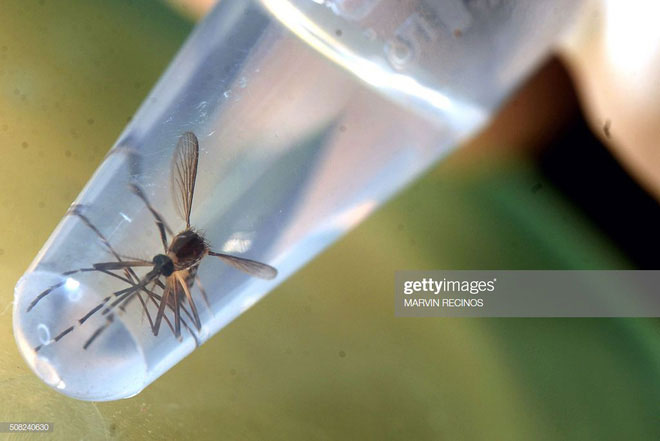The whole country of Iceland has only one mosquito, it is also soaked in alcohol and put into a museum
Even when visiting Denmark, Scotland or Norway, you will still encounter at least one mosquito. But what if you choose Iceland? This small Nordic country claimed that they had no mosquitoes.
The Dracura demons are blood-soaked in this cold island nation, so that the only mosquito in Iceland has been soaked in wine and displayed in the National Natural History Institute. It's not even a mosquito with a real Icelandic nationality.

The whole country of Iceland has only one mosquito, it is also soaked in alcohol and put into the museum - (artwork).
In 1980, a scientist caught this mosquito in a plane, perhaps traveling to the island nation. " I chased it around the cabin until I caught it, " biologist Gisli Mar Gislason of the University of Iceland told the New York Times. " That's the only mosquito I've ever found in Iceland."
There are several reasons why this country has no mosquitoes.
Low heat background partly contributes, but not all. In other countries near the North Pole like Greenland, their heat may not be much different from Iceland. But Greenland still has mosquitoes. That's because this country has so many shallow ponds, where female mosquitoes can lay eggs.
These shallow ponds are the first place to heat up when the ice melts. Mosquitoes can lay eggs in it when the summer comes when the heat is temporarily warming up. The mosquito eggs hatch into larvae, then the larvae turn into bloodthirsty mosquitoes.
Because the summer months near the North Pole do not last long, the lives of mosquitoes in Greenland are very short. In order to survive, they were forced to develop large bodies. The mosquitoes in Greenland are so big and aggressive, they can even gather together and take down a young reindeer.
Ecologist Lauren Culler from Dartmouth University said: " Mosquitoes go through a faster development process, which means they have less days to suck on blood. Laboratory studies, Field research and population models show that the climate is warmer so mosquitoes can survive until adulthood. "
But that's about Greenland and other Nordic countries. Particularly for Iceland, this island nation has no shallow ponds for mosquitoes to reproduce. Iceland's ecosystem witnessed three major freezing and thawing cycles of the year.
Because these cycles are continuous and very short, mosquitoes simply don't have enough time to mature. As soon as the heat background warms up and the lakes dissolve a little, they all freeze when the weather gets cold.

Iceland's National Institute of Natural History, the country's only mosquitoes.
But scientists are worried that mosquitoes can invade Iceland, as the world continues to suffer from waves of climate change. When the planet heats up, the mosquitoes will have a better chance of reproducing without being hindered by cold weather.
Apart from Iceland, there are 3 places in the world currently without mosquitoes. These are the regions of New Caledonia, French Polynesia and the Seychelles in the South Pacific. The absence of mosquitoes in these three islands may not be dependent on climate change.
The reason why mosquitoes cannot " export labor " to these islands, perhaps because they are too separate from the continents. Islands have no cattle before the 18th century (cattle are a source of food for mosquitoes).
Today, they are also very far from human maritime routes, which restrict the mosquitoes traveling to these Pacific islands.
- Unbelievable facts about Iceland
- Want to see the sun all day without diving, go to Iceland!
- Use caution when using fruit soaked wine
- Beautiful scenery of Iceland through the perspective of Vietnamese photographer
- Decode the terrifying death of King Charles II
- How to use alcohol stove for safety?
- Video: Iceland's most active volcano erupts
- The biggest super volcano in Iceland is about to get angry
- Alcohol antidote: can alcohol be solved?
- See the mesmerizing beauty of Iceland nature
- Experiment with mosquitoes
- Promotion of the construction of the country's first science museum
 Why do potatoes have eyes?
Why do potatoes have eyes? 'Tragedy' the world's largest carnivorous life: Death becomes ... public toilet
'Tragedy' the world's largest carnivorous life: Death becomes ... public toilet Tomatoes were once considered 'poisonous' for 200 years
Tomatoes were once considered 'poisonous' for 200 years Detecting microscopic parasites on human face
Detecting microscopic parasites on human face